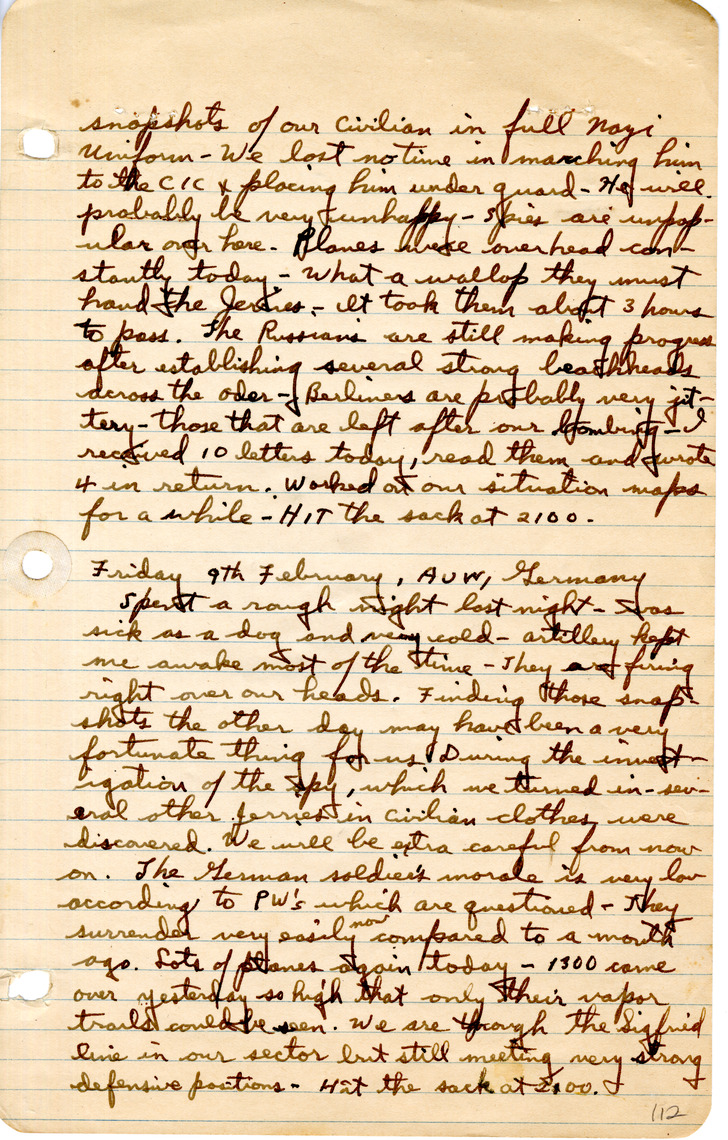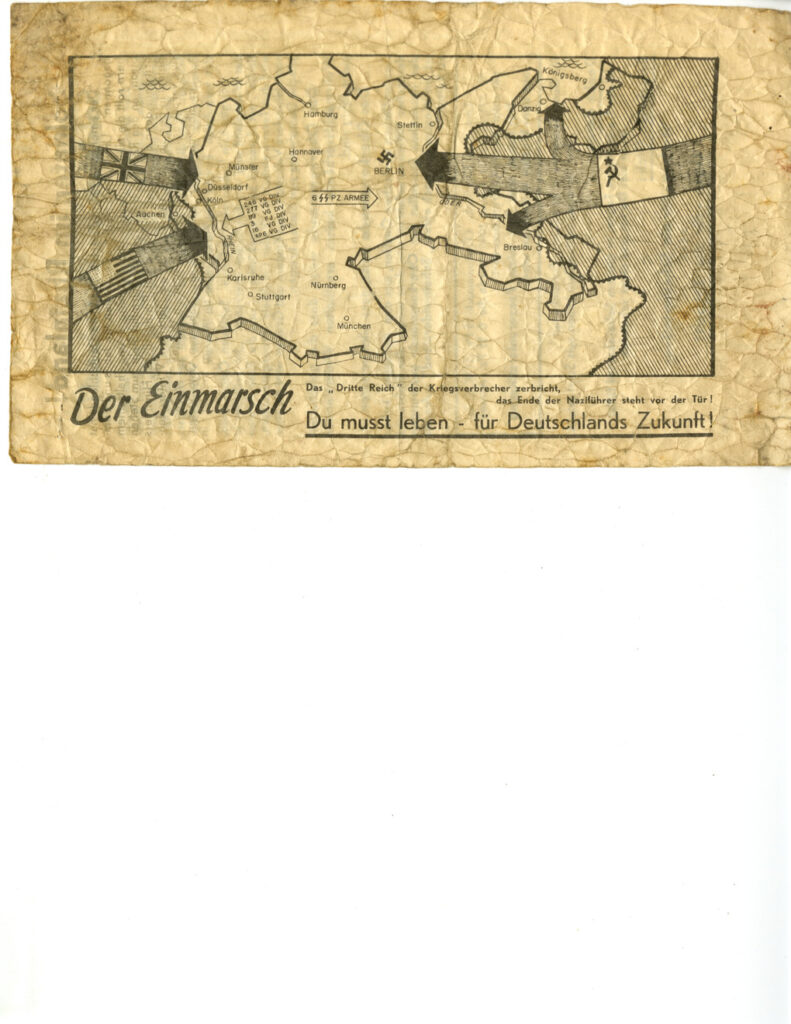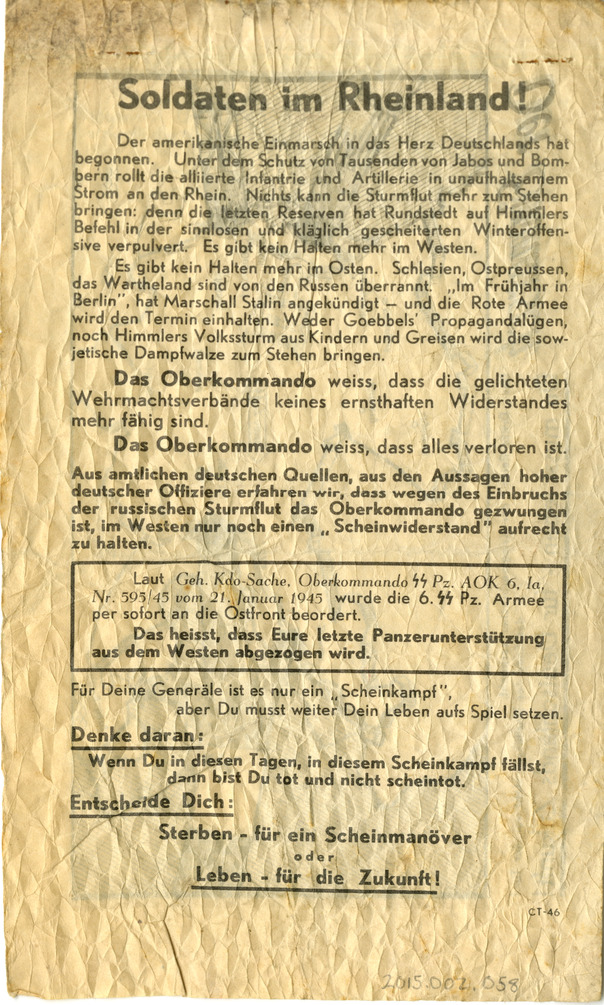[Continued from previous page] snapshots of our civilian in full Nazi uniform. We lost no time in marching him to the CIC and placing him under guard. He will probably be very unhappy. Spies are unpopular over here. 1For Operation GREIF, Captain Otto Skorzeny recruited 2,000 German soldiers to infiltrate Allied territory for the purposes of sabotage and spying. 150 soldiers spoke impeccable English and were carefully trained to imitate American mannerisms by studying the movements of Humphrey Bogart in Casablanca. Though Americans soon discovered Skorzeny’s plan and captured or killed many of the German infiltrators, Operation GREIF succeeded in spreading fear and suspicion throughout the Allied front lines. Atkinson, The Guns at Last Light, pp. 443-44. Planes were overhead constantly today. What a wallop they must hand the Jerries. It took them about 3 hours to pass. The Russians are still making progress after establishing several strong beachheads across the Oder.2 The Oder River constitutes the boundary between Germany and Poland and intertwines with the Vistula River. The waterway runs through both countries and deposits into the basin of the Baltic Sea. Berliners are probably very jittery, those that are left after our bombing. I received 10 letters, read them, and wrote 4 in return. Worked on our situation maps for a while. HIT the sack at 2100.
Friday, 9th February [1945] Auw, Germany
Spent a rough night last night, was sick as a dog and very cold. Artillery kept me awake most of the time. They are firing right over our heads. Finding those snapshots the other day may have been a very fortunate thing for us. During the investigation of the spy, which we turned in, several other Jerries in civilian clothes were discovered. We will be extra careful from now on. The German soldier’s morale is very low according to PW’s which are questioned. They surrender very easily now compared to a month ago. Lots of planes again today. 1300 came over yesterday so high that only their vapor trails could be seen. We are through the Sigfried line in our sector but still meeting very strong defensive positions.3 The Siegfried Lineor the “Westwall” was a German defensive line along the borders of the Netherlands, Belgium, Luxembourg, France, and Switzerland. The defensive system was created originally as part of the Hindenburg Line during World War I, but was extended and added to during World War II. The Germans relied heavily on “dragons teeth” which were large, triangular concrete chunks used to derail tanks, large ditches, minefields, and anti-tank barriers which were all placed strategically along the Siegfried Line. Goetz goes into detail about the appearance of the Siegfried line in his February 21 diary entry. Goetz also included a 7-page typescript marked “Secret”, re: “Siegfried Line” with his diary entry from February 16, 1945. See Appendix, Insert 38. Charles MacDonald, The Siegfried Line Campaign (Washington D.C.: 1990) pp. 3-14. Hit the sack at 2100.


